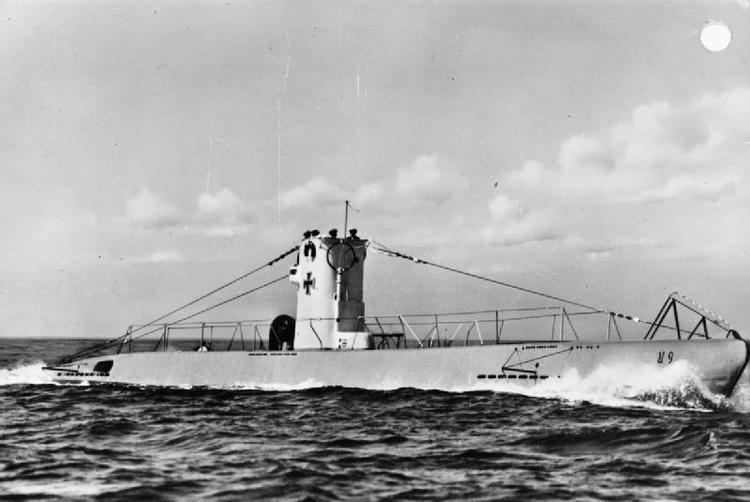Name U-23 Yard number 553 Commissioned 24 September 1936 Launched 28 August 1936 Draft 3.9 m | Ordered 2 February 1935 Laid down 11 April 1936 Construction started 11 April 1936 Length 43 m | |
 | ||
Builder Friedrich Krupp Germaniawerft Part of | ||
German submarine U-23 was a Type IIB U-boat of Nazi Germany's Kriegsmarine, built in Germaniawerft, Kiel. She was laid down on 11 April 1936 and commissioned on 24 September.
Contents
Design
German Type IIB submarines were enlarged versions of the original Type IIs. U-23 had a displacement of 279 tonnes (275 long tons) when at the surface and 328 tonnes (323 long tons) while submerged. Officially, the standard tonnage was 250 long tons (250 t), however. The U-boat had a total length of 42.70 m (140 ft 1 in), a pressure hull length of 28.20 m (92 ft 6 in), a beam of 4.08 m (13 ft 5 in), a height of 8.60 m (28 ft 3 in), and a draught of 3.90 m (12 ft 10 in). The submarine was powered by two MWM RS 127 S four-stroke, six-cylinder diesel engines of 700 metric horsepower (510 kW; 690 shp) for cruising, two Siemens-Schuckert PG VV 322/36 double-acting electric motors producing a total of 460 metric horsepower (340 kW; 450 shp) for use while submerged. She had two shafts and two 0.85 m (3 ft) propellers. The boat was capable of operating at depths of up to 80–150 metres (260–490 ft).
The submarine had a maximum surface speed of 12 knots (22 km/h; 14 mph) and a maximum submerged speed of 7 knots (13 km/h; 8.1 mph). When submerged, the boat could operate for 35–42 nautical miles (65–78 km; 40–48 mi) at 4 knots (7.4 km/h; 4.6 mph); when surfaced, she could travel 3,800 nautical miles (7,000 km; 4,400 mi) at 8 knots (15 km/h; 9.2 mph). U-23 was fitted with three 53.3 cm (21 in) torpedo tubes at the bow, five torpedoes or up to twelve Type A torpedo mines, and a 2 cm (0.79 in) anti-aircraft gun. The boat had a complement of twentyfive.
Service history
At 04:45 on 4 October 1939, U-23 scored one of the Kriegsmarine's early successes of the war when she torpedoed and sank with gunfire, the merchant ship Glen Farg about 60 nmi (110 km; 69 mi) south-southwest of Sumburgh Head (southern Shetland). One person died, while 16 survivors were picked up by HMS Firedrake and landed at Kirkwall the next day.
In 16 patrols U-23 sank seven ships for a total of 11,179 gross register tons (GRT) including two warships, as well as damaging a warship and an auxiliary warship.
Over the course of her service with the Kriegsmarine, U-23 had ten commanding officers, the most famous of whom was Kapitänleutnant Otto Kretschmer, who went on to become the top scoring U-boat ace. After service in the Atlantic with the 1st U-boat Flotilla, U-23 served as a training boat with the 21st U-boat Flotilla from July 1940 until September 1942. U-23 was then transported in sections along the Danube to the Romanian port of Galați. She was then re-assembled by the Romanians at the Galați shipyard and sent to the Black Sea port of Constanţa, Romania, with the 30th U-boat Flotilla until September 1944.
Fate
U-23 was scuttled by her crew on 10 September 1944, off the coast of Turkey in the Black Sea at position 41°11′N 30°00′E to prevent her capture by the advancing Soviets.
On 3 February 2008, The Daily Telegraph newspaper reported that U-23 had been discovered by Selçuk Kolay, a Turkish marine engineer, in 160 ft (49 m) of water, three miles from the town of Agva.
